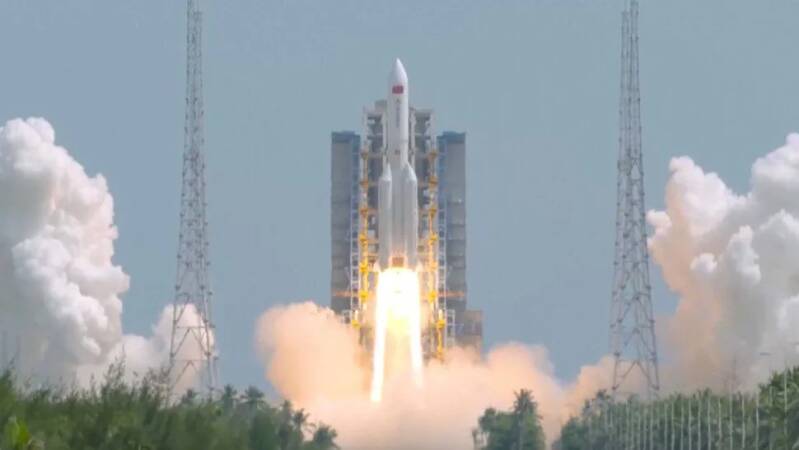China has intensified its race to build a homegrown satellite internet megaconstellation, successfully launching another batch of spacecraft for its ambitious Guowang broadband network early Wednesday.

A Chinese Long March 5B rocket launches the eighth batch of satellites for the Guowang internet megaconstellation from Hainan island. Image credit: CCTV
At 2:43 p.m. local time (2:43 a.m. EDT, 0643 GMT), a Long March 5B heavy-lift rocket roared skyward from the Wenchang Space Launch Center on Hainan Island, carrying a cluster of large communications satellites into low Earth orbit (LEO). The China Aerospace Science and Technology Corporation (CASC), the state-owned prime contractor for the nation’s space program, confirmed the mission was a “complete success.”
Guowang — meaning “national network” — is operated by China Satnet, a state-run company established in 2021 to develop the constellation. Once complete, Guowang is expected to consist of around 13,000 satellites, delivering high-speed internet across China and to global customers.
While the network remains far from operational maturity, China is ramping up deployment speed. Wednesday’s mission marked only the eighth launch for Guowang since the project began, but it was already the fourth launch in less than three weeks — a significant acceleration in pace.
Unlike SpaceX’s Starlink missions, which typically deploy 24–28 smaller satellites at a time, each Guowang launch carries just eight to ten spacecraft, reflecting their larger size and likely higher bandwidth capabilities.
Competing in the Global Broadband Space Race
China’s effort is widely seen as a strategic move to compete with the United States in the emerging market for satellite-based broadband. Starlink, operated by Elon Musk’s SpaceX, is currently the dominant player with nearly 8,100 operational satellites already in orbit and tens of thousands planned.
Guowang is not China’s only megaconstellation under development. Another massive project, Qianfan — meaning “Thousand Sails” — began deployment in 2024 and is envisioned to rival Guowang in scale. Together, the two systems could give China one of the largest satellite fleets in the world, offering global internet coverage independent of Western providers.
The competition is not limited to the U.S. and China. Other players, including Amazon’s Project Kuiper, are entering the fray. Just two days before the latest Guowang launch, SpaceX lofted another batch of satellites for Kuiper, which aims to operate about 3,200 spacecraft once fully built.
Analysts say the rapid pace of Guowang’s deployment underscores Beijing’s determination to secure a strong position in the LEO broadband market, which has applications ranging from consumer internet services to military communications.
By building and controlling its own massive satellite internet infrastructure, China could reduce reliance on foreign providers, enhance cybersecurity, and extend its communications reach into remote and contested regions.
If China maintains this new accelerated launch cadence, Guowang’s expansion could begin to mirror Starlink’s explosive growth — though the technical, logistical, and regulatory hurdles remain significant.


Add comment
Comments